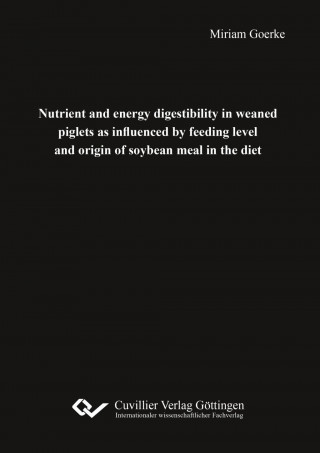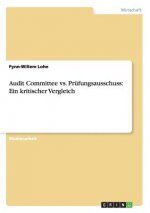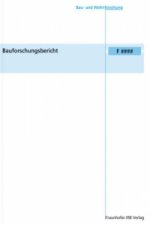
Livrare
Consilier de cumpărături





Nu se pretează? Nu contează! La noi puteți returna bunurile în 30 de zile
 Voucher cadou
orice valoare
Voucher cadou
orice valoare
Cu un voucher cadou nu veți da greș. În schimbul voucherului, destinatarul își poate alege orice din oferta noastră.
Nutrient and energy digestibility in weaned piglets as influenced by feeding level and origin of soy-bean meal in the diet
 engleză
engleză
 68 b
68 b
30 de zile pentru retur bunuri
Ar putea de asemenea, să te intereseze


Feed is the greatest single cost factor in pig production, and protein and energy accounts for the largest proportion of feed costs. Therefore, it is crucial that the protein and energy content of a diet is characterized in the best possible way. Over the past years, the standardized ileal digestibility (SID) of crude protein (CP) and amino acids (AA) has been introduced into diet formulation for pigs in several countries. Moreover, different energy systems are available for feed evaluation including digestible energy (DE), metabolizable energy (ME) and net energy (NE). For soybean meal (SBM), the most commonly used feed ingredient in pig diets, tabulated values for SID of AA in addition to DE, ME or NE contents have been determined in grower-finisher pigs rather than weaned piglets. Due to the lack of separate feed tables for piglets, tabulated values originating from experiments with grower-finisher pigs are being used for diet formulation in piglet feeding, although post-weaning feed intake (FI) is highly variable and often lower than 3 times the maintenance energy requirement of weaned piglets. Thus, it remains open, if values obtained with grower-finisher pigs can be used for piglets as well. Furthermore, in grower-finisher pigs it has been shown that dietary inclusion of SBM sources of different origins may affect SID of CP and AA. The influence of SBM origin on SID of CP and AA in piglets has not been investigated so far. Therefore, the first objective of the present thesis was to determine SID of CP and AA in a large variety of SBM sources sourced from different countries, whereas the second and third objective was to investigate the effect of FI level on apparent ileal digestibility (AID) and SID of CP and AA, as well as on apparent total tract digestibility (ATTD) of proximate nutrients and energy in weaned piglets. For this purpose, a digestibility experiment with a total of 36 (initial BW 5.6 kg) newly weaned pigs, surgically fitted with simple T-cannulas at the distal ileum, was conducted. The piglets were housed in metabolic crates, and were fed semi-synthetic diets based on cornstarch and 1 out of 18 different SBM batches originating either from Argentina (6 batches), Brazil (6 batches) or the United States (US; 6 batches). Diets were fed on three graded levels of FI corresponding to 30, 45 and 60 g per kg average body weight (BW) of piglets, equivalent to 50, 75 or 100 g/kg BW0.75 d or 1.9, 2.6 and 3.1 times the energy requirement for maintenance. The whole experiment was split in 3 consecutive parts with 12 piglets, each. Over the whole experiment, the piglets were randomly allocated to the different combinations of FI level and SBM, but balanced in order to achieve 3 identical experimental parts. Chapter 1 of the present thesis provides a brief introduction into the objective of this thesis, including background information on SBM production, composition, and a literature review about studies concerning the impact of SBM origin and the effect of FI level on nutrient digestibility in pigs. Chapter 2 includes information on the chemical composition and proximate constituents of the 18 SBM batches originating from Argentina, Brazil, or the US. The average content of CP was greater for Brazilian SBM (P ? 0.05) compared to the other 2 origins. Contents of most AA were greater (P ? 0.05) in Brazilian compared to Argentinean SBM batches. Amino acid contents in US SBM batches ranged between those from Argentina and Brazil. Average trypsin inhibitor activity was greatest (P ? 0.05) in Brazilian SBM. Mycotoxins were detected in 8 out of 18 SBM batches, but all mycotoxin levels were below their critical benchmarks. The contents of individual isoflavones varied considerably among SBM origins (P ? 0.05). The SID of Arg, Phe, Thr, Trp, Asp, Gly, and Ser were greater (P ? 0.05) for US compared to Argentinean SBM batches, and intermediate values were obtained for Brazilian SBM batches. The SID values were most variable within Argentinean SBM batches and most homogenous within US SBM batches, as indicated by a great and a small coefficient of variation, respectively. However, SID of CP and AA were not related to any of the analyzed chemical constituents. It was concluded that EU imports of SBM are generally of high quality. The obtained SID values contribute substantially to the expansion of databases on SID of CP and AA in SBM from the 3 major soybean-producing countries for piglets. However, SID values obtained with piglets were considerably lower compared with tabulated values originating from grower-finisher pigs. Thus, further studies are warranted to confirm that finally separate feed tables for ingredients used in diet formulation for piglets are required to account for these differences. In Chapter 3, the effect of 3 graded levels of FI on AID and SID of CP and AA in SBM based diets was determined in piglets. The AID and SID of most AA were quadratically affected by the FI level (P ? 0.05). Initially, both AID and SID of most AA increased up to 1.9 % units as the FI level was increased from 30 to 45 g/kg BW. Thereafter, these AID and SID values decreased by 2.6 and 2.7 % units, respectively, as the FI level was further increased from 45 to 60 g/kg BW. It was concluded that there is a significant effect of feed intake level, albeit of small magnitude, on AID and SID of CP and AA, which possibly has to be accounted for in feed tables, due to the high variability of voluntary FI post weaning. In Chapter 4, the effect of 3 graded FI levels on AID and ATTD of proximate nutrients and energy, as well as on estimates of dietary DE, ME and NE contents was investigated. Due to the graded level of FI, and thereby the graded intake of nutrients, ileal endogenous nutrient losses and/or total tract endogenous nutrient losses could be estimated by linear regression analysis, and true digestibility values as well as urinary endogenous N losses could be calculated. The AID of DM, N and energy as well as ATTD of neutral detergent fiber, acid detergent fiber and ether extract (EE) in the assay diets was not affected (P > 0.05) by FI level. However, there was a small decrease in ATTD of DM, N, OM, ash and energy, as well as in DE, ME and NE content in the assay diets (P < 0.05) with increasing FI level. Furthermore, for DM, energy and N, the disappearance in the large intestine expressed as percentage of their ileal recovery decreased (P < 0.05) with increasing FI. There was a high variability in the estimate of ileal endogenous losses of N, as well as in the estimate of total tract endogenous losses of N, EE and ash, indicating great variation in individual endogenous nutrient loss between animals. Moreover, estimation of true total tract digestibility of nutrients by regression analysis was obviously affected by the small decease in ATTD with increasing FI level. As a result, estimates for true nutrient digestibility were lower compared to their corresponding ATTD values. Altogether, the present data indicate that comparison of digestibility values between and within studies may be confounded by variations in FI level. Thus, when designing digestibility studies with piglets, it is necessary to standardize the FI level, as it is already recommended for digestibility experiments with grower-finisher pigs. Moreover, given that energy digested in the small intestine is presumed to be nearly exclusively available for the host and with respect to the varying voluntary FI in piglets and the confounding effect of the microbial population present in the large intestine, digestible energy contents should ideally be determined at the ileal level. In the future, the difference between ATTD and AID of energy may be used to differentiate between digestibility and fermentability of feed ingredients. Further studies are warranted to investigate if there are correlations between apparent ileal digestible energy contents and ME and NE contents in feed ingredients for piglets. Supervisor: Prof. Dr. Dr. h. c. Rainer Mosenthin
Informații despre carte
 engleză
engleză




 Cum să cumpăr
Cum să cumpăr
































